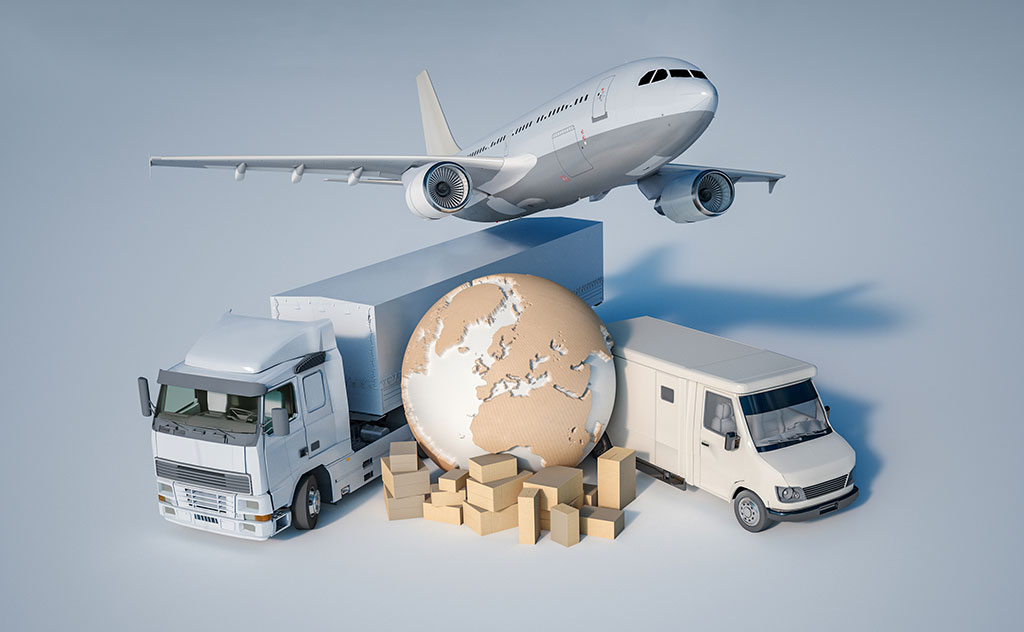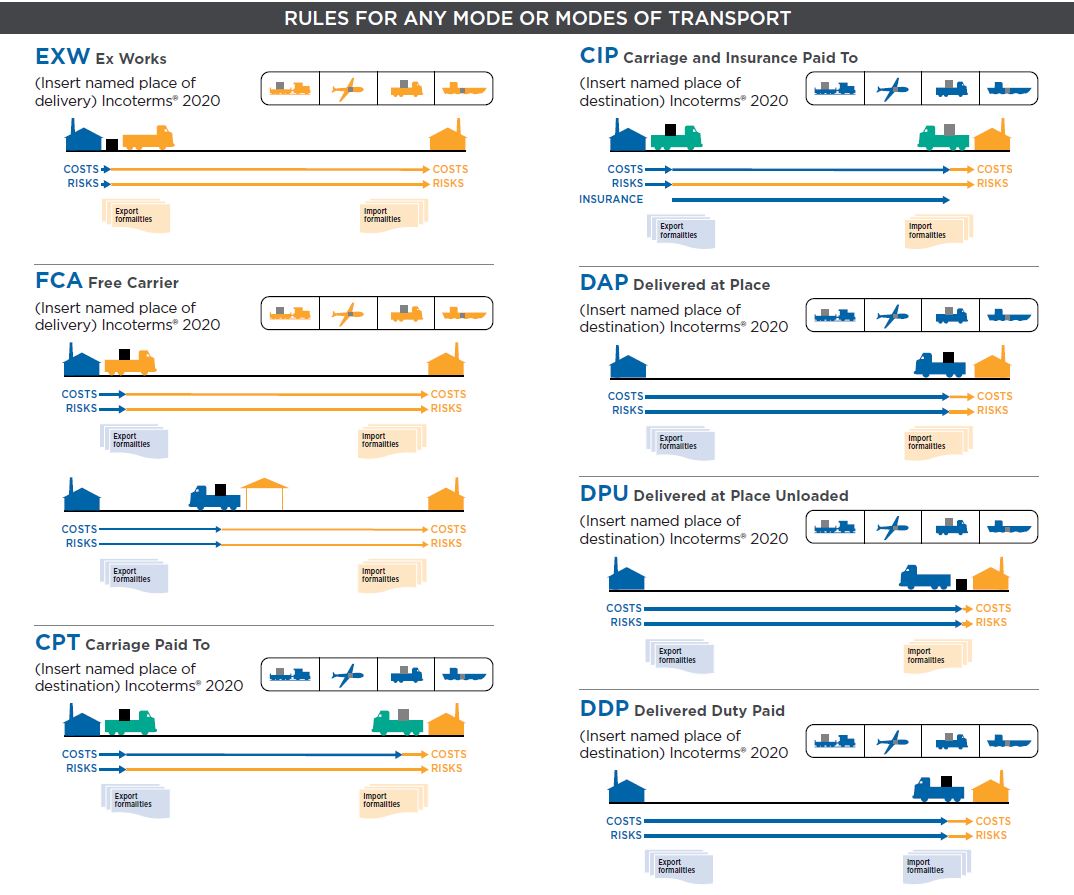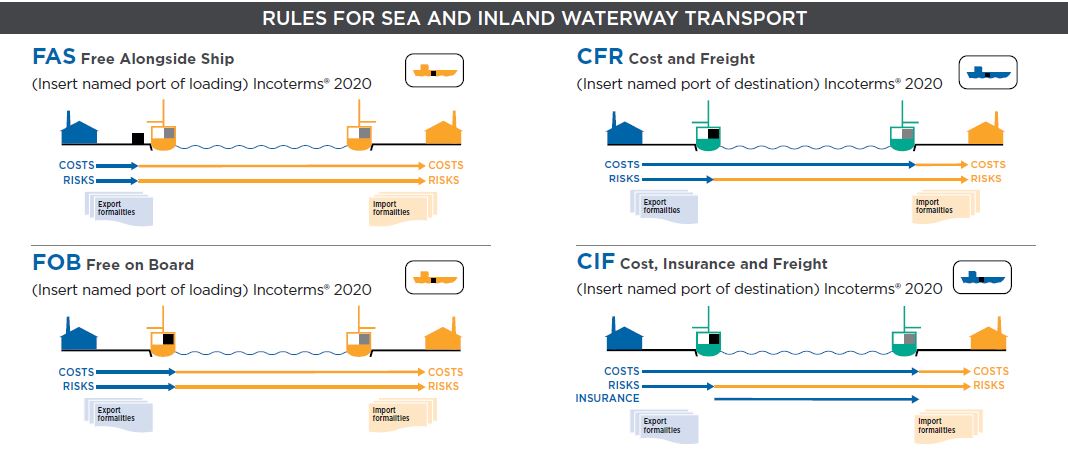Explaining the Latest Goods Delivery Terms
How Incoterms 2020 work
Share

Nov 27, 2020

The supply chain covers the steps it takes to get the product or service from its original state to the customer. An important step in this process is the terms based on which this product leaves the facility and arrives in its destination. Terms on who takes care of loading, logistics, insurance, importation duties (in international trade), and unloading are essential parts of the complete supply chain and ultimately affect the transaction cost.
Suppliers and buyers were negotiating their own interpretations of responsibilities for each order. Different practices and legal interpretations between traders around the world required a standard set of rules and guidelines. As a result, the International Chamber of Commerce (ICC) published the first Incoterms rules in 1936. “Incoterms” is an acronym standing for international commercial terms. These Incoterms standardized delivery terms that were widely used by most around the world. Since the initial publishing of the incoterms, ICC has been maintaining and developing these terms as the trade and world evolved. ICC that was established in 1919 was the facilitator of international trade, so their action in this space was not coincidental.
The latest published incoterms are Incoterms 2020 and expected to be valid through 2030. There are 11 incoterms that could be grouped by modes of transportation: (1) all modes of transportation; (2) sea and inland waters. These incoterms define which of the parties - the seller or the buyer - is responsible for loading/unloading, transportation, customs clearance from cost, insurance and risk perspectives. All incoterms - or delivery terms - are identified with three letters, which are the most popular way of representation.
All modes of transportation
EXW (Ex Works) - The term means the buyer picks up the goods at the seller premises, or at another named place. This term places the maximum obligation on the buyer and minimum obligations on the seller. The Ex Works term is often used while making an initial quotation for the sale of goods without any costs included. This term is one of the most popular terms.
FCA (Free Carrier) - The seller clears the goods for export and delivers to the named place (possibly including the seller's own premises). The goods can be delivered to a carrier nominated by the buyer, or to another party nominated by the buyer. This term is one of the most popular terms and often mixed with FOB, which is only for sea freight.
CPT (Carriage Paid To) - The seller covers the delivery of the goods up to the named place of destination. However, the goods are considered to be delivered when the goods have been handed over to the first carrier, so that the risk transfers to buyer upon handing goods over to that carrier at the place of shipment in the country of export. CPT replaces the previous C&F (cost and freight) and CFR terms for all shipping modes outside of non-containerized sea freight.
CIP (Carriage and Insurance Paid To) - This term is broadly similar to the above CPT term, with one exception that the seller pays for insurance of goods in transit.
DPU (Delivered at Place Unloaded) - This term requires that the seller delivers (or pays to deliver) the goods to the named place of destination and unloads them. The seller covers all the costs of transport (export fees, carriage, unloading from the main carrier at the destination port and destination port charges) and assumes all risk until arrival at the destination port.
DAP (Delivered at Place) - This term broadly similar to DAP with the exception that the buyer takes care of unloading. Under the DAP term, the risk passes from the seller to the buyer from the destination point.
DDP (Delivered Duty Paid) - The seller covers the delivery of the goods to the named destination, and pays all costs including import duties and taxes but excluding unloading. This term is also one of the most popular terms.
The International Chamber of Commerce prepared the following infographic that is very helpful in visualizing these terms at a high level.

Sea and inland water transportation only
FAS (Free Alongside Ship) - The seller delivers the goods to the buyer's vessel at the named port of shipment, unloads the goods in the port but does not cover the loading to the vessel. The seller takes responsibility for costs and risk of loss from accepting the shipment at the port.
FOB (Free on Board) - This term is similar to FAS with the exception that the seller also loads the goods on the vessel. This one is one of the most popular terms, if not the most popular. It’s often mixed with FCA as FOB only works for sea and inland water, while FCA works well on land.
CFR (Cost and Freight) - The seller pays for the delivery of the goods up to the named port of destination. Risk transfers to the buyer when the goods have been loaded on board the ship in the country of export.
CIF (Cost, Insurance and Freight) - This term is broadly similar to the above CFR term, with the exception that the seller covers insurance for the goods in transit. This term is another popular term in international trade.
